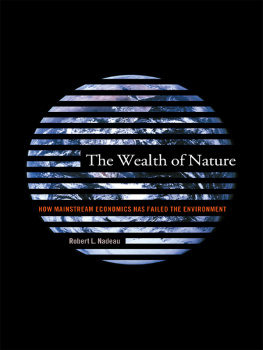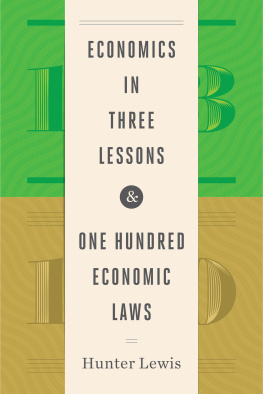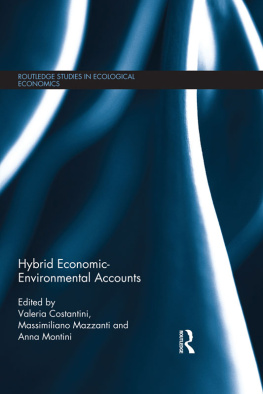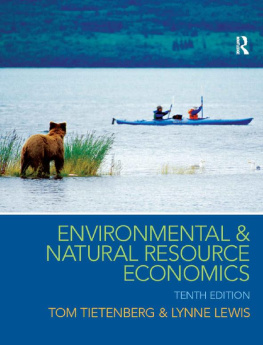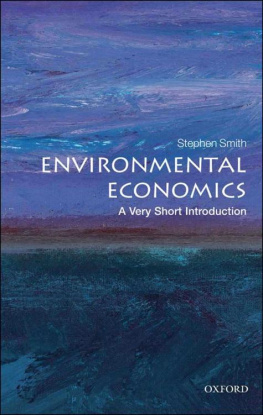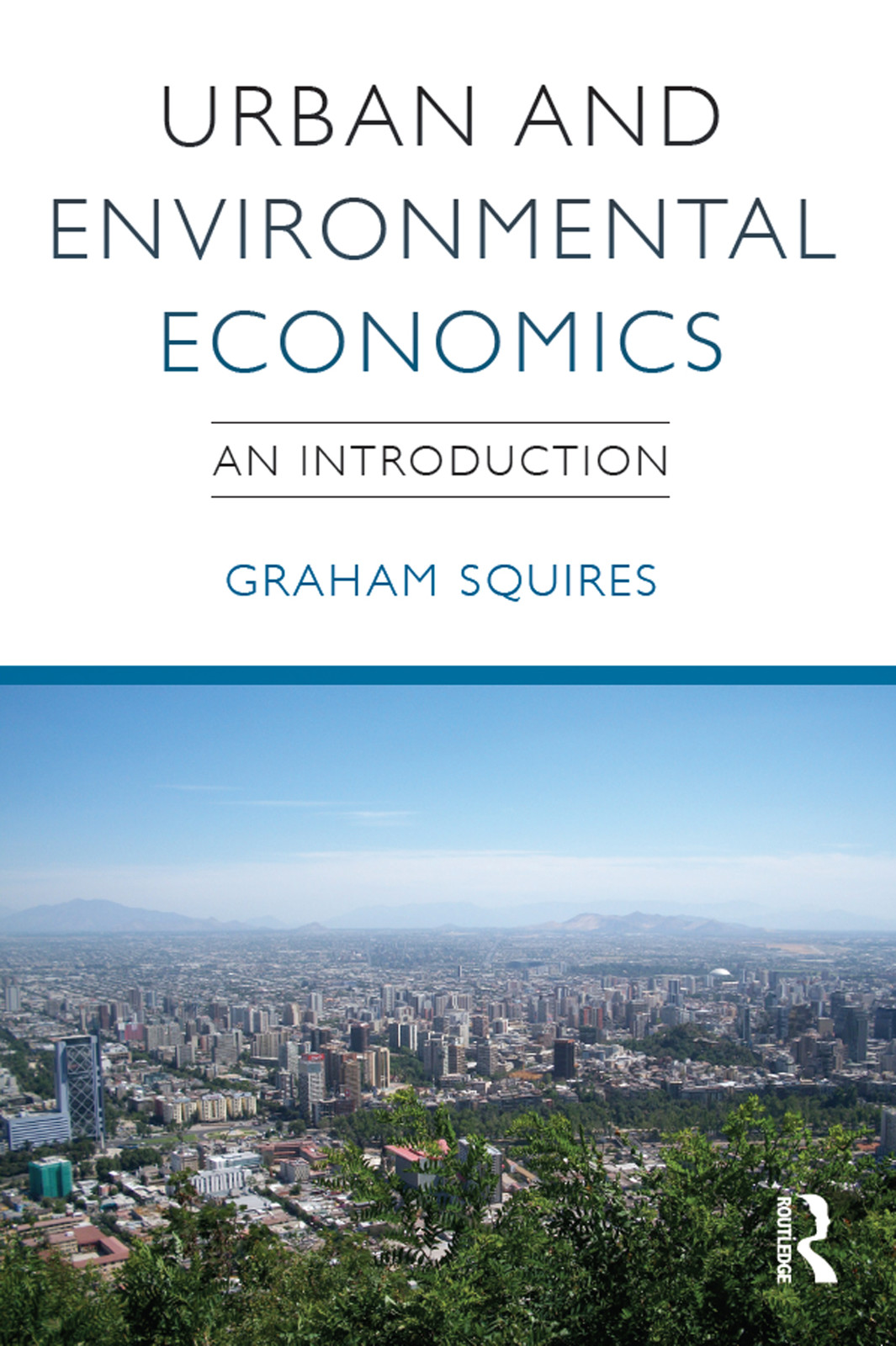Urban and Environmental Economics
The importance of urban spaces to environmental protection and social issues is well established, particularly within the working lives of planners, developers, architects, building designers and quantity surveyors. Those new to this industry, or preparing to join it, must have an understanding of how their environmental and social responsibilities relate to their professional responsibilities in economic terms.
Designed as an introductory textbook, Urban and Environmental Economics provides the background information to understand crucial economic concepts and techniques. A broad range of theories of the natural and built environment and economics are explained, helping the reader to develop a real understanding of the topics that influence this subject, such as:
the history of economic thought and perspectives of urban and environmental economics;
market forces, market failure and externalities in the built and natural environment;
introduction to cost-benefit analysis;
macroeconomic tools and policy;
issues in urban space: city models and land use;
environmental resources and use in urban space: pollution control, natural resource and energy economics, resource valuation;
international contemporary challenges: climate change, globalisation, sustainable urban development, appraisal, evaluation and assessment, and informatics.
Illustrated throughout and with lists of key concepts in every chapter, this book is ideal for students at all levels who need to get to grips with the economics of the environment within an urban and built environment context. The book is particularly useful to those studying planning, architecture, land economy, environmental management, property, geography, real estate, construction, housing, regeneration and public policy.
Graham Squires is a Senior Lecturer at the University of the West of England (UWE), Bristol. His research interests include economics (urban and environmental), development, real estate, spatial planning, housing, neighbourhoods and regeneration. He has written academic books and journal articles, in addition to working on various consultancy projects in policy and practice. His previous book, Introduction to Building Procurement, was published by Routledge in 2011.
Urban and Environmental
Economics
An introduction
Graham Squires

First published 2013
by Routledge
2 Park Square, Milton Park, Abingdon, Oxon, OX14 4RN
Simultaneously published in the USA and Canada
by Routledge
711 Third Avenue, New York, NY 10017
Routledge is an imprint of the Taylor & Francis Group, an informa business
2013 Graham Squires
The right of Graham Squires to be identified as author of this work has been asserted by him in accordance with sections 77 and 78 of the Copyright, Designs and Patents Act 1988.
All rights reserved. No part of this book may be reprinted or reproduced or utilised in any form or by any electronic, mechanical, or other means, now known or hereafter invented, including photocopying and recording, or in any information storage or retrieval system, without permission in writing from the publishers.
British Library Cataloguing in Publication Data
A catalogue record for this book is available from the British Library
Library of Congress Cataloging-in-Publication Data
Squires, Graham.
Urban and environmental economics : an introduction / Graham Squires.
p. cm.
Includes bibliographical references and index.
1. Urban economics. 2. Environmental economics. I. Title.
HT321.S69 2013
330.91732dc23
2012009071
ISBN: 978-0-415-61990-5 (hbk)
ISBN: 978-0-415-61991-2 (pbk)
ISBN: 978-0-203-82599-0 (ebk)
Typeset in Bembo by
FiSH Books Ltd, Enfield
Contents
List of illustrations
Figures
Tables
Photographs
All photographs the author
Acknowledgements
Thanks are given to all family, friends, students and colleagues who have helped shape the writing of this book. Special thanks are given to Fiona for her loving support and patience.
For Tony Squires (19432002).
Love and peace.
Chapter 1
What is urban and environmental economics?

Vancouver, Canada
a. Overview
This text on urban and environmental economics introduces economics to the interlocking paradigms of both urban and environmental issues. Disciplines of both urban economics and environmental economics have often tended to take a separate and insular view from each other it is one intention of this book to unify such thinking as well as extending thought into this field. Whilst doing this, the text more pragmatically demonstrates what urban and environmental economics entails within theory, concepts and practice. Furthermore, an introduction of techniques and tools within the subject will be outlined for the reader to use within both research and further studies.
). The built environment strand will connect to the spatial context of study; moreover, built-up areas at varying spatial scales will form the canvas on which discussion is expressed. This, for instance, involves analysis of neighbourhood effects within a city, or develops analysis of the agglomeration of cities within a larger urban conurbation or metropolis. Within these geographies, the economic concepts to be unearthed are those that integrate a multitude of themes within the urban issue strand. Themes of issues attached to urban geographies include education, such as examining how educational attainment is distributed over space; or those such as housing, where analysis involves an exploration of how the value of a neighbourhood correlates to household income and wealth. The third strand of environmental resources will draw together both urban issues and the spatial context of the built environment. For instance, the implications of de-urbanising and urbanising areas will be a multitude of needs and wants, which will have to be met, if possible using a scarce amount of available environmental resources. An urbanising world city will have wants such as building materials and energy needs, these will be met in part or in entirety, depending upon the availability of such resources and thus the economic choices and decisions will play a significant role in how urban areas develop.

Figure 1.1 Three interlocking strands of urban and environmental economics
Source: Author
Within the three main strands, basic economic concepts for resource allocation are introduced that will be relevant to the planning, valuation and management of shared spaces. Economic concepts to be explored for application on urban and environmental matters include key issues such as considering the limits to growth and how choice is being played out within the built environment given the scarce environmental resources available. With respect to scarcity and choice, economic tools can be applied to provide more technical measurement of urban and environmental issues. Examples of economic tools include the use of cost-benefit analysis (CBA), and hedonic modelling that can provide more empirical evidence to support both arguments and decision-making in this field. Understanding and competence in these tools and models can aid in their use when applying them to both general and specific case studies and examples. For instance, more general comparative CBA could demonstrate the common and differentiating features of introducing a road or rail bypass for an urban area (e.g. London Cross-Rail), whereas the specific introduction of a housing estate to relieve residential pressures in an urban area could make use of a hedonic house price model that measures the dynamics (involving time) and magnitude (steepness of change) of particular independent variables such as education and health in relation to changes in a dependent variable such as house price.



